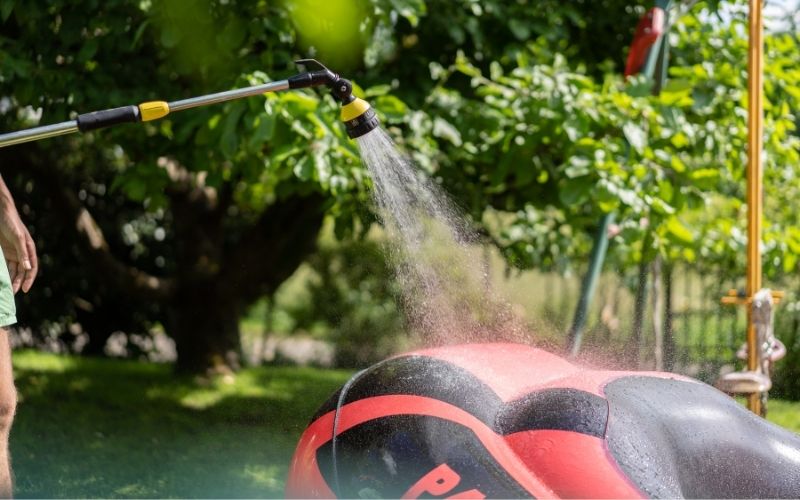You can’t begin to describe the excitement you have had with your kayak.
You have glided along quiet lakes and ripped through treacherous rapids. Maybe you have even tested some international waters.
All along, you have taken every measure to keep your kayak in good condition. This includes keeping it clean and storing it properly.
But now you look, and there it is–a big patch of mold on the kayak skin.
How can you clean the mold off? What are the best cleaning materials to use?
Once your kayak is completely clean and mold-free, can you leave it inflated when you store it? You certainly don’t want to take a chance on the mold returning.
Let’s find these answers.
Table of Contents
Do Inflatable Kayaks Get Moldy?
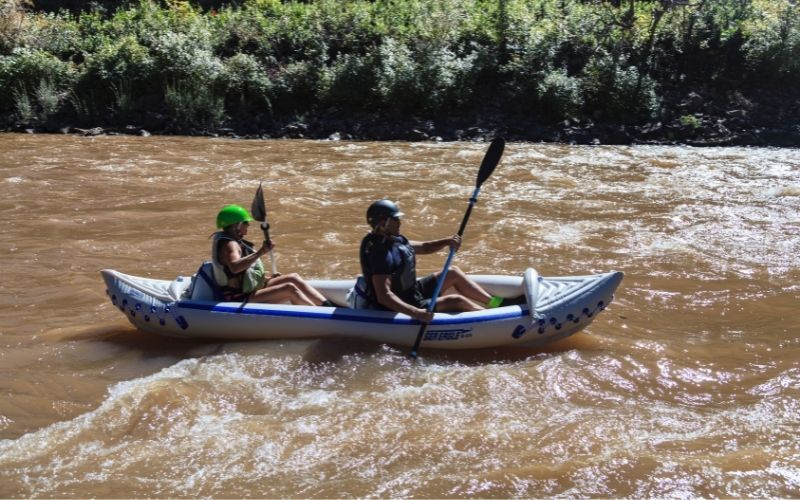
Mold is a creepy, fuzzy organism caused by excess water build-up. It grows where it can, even on boats and kayaks.
Dampness and decay are the breeding grounds for mold, which is caused by fungi. Fungi are live organisms that are always seeking to reproduce.
They prey on unsuspecting kayakers who are drained of energy from an active day on the water.
Have you ever been tempted to just lay down your kayak and come back to dry it off later? Then you are the type of kayaker mold is looking for.
Mold loves water. Since kayaking requires water, mold can be attracted like a fish to a worm.
You will know mold when you see it. It can be green, black, white, or brown. It starts in the form of speckled dots and spreads into a stain.
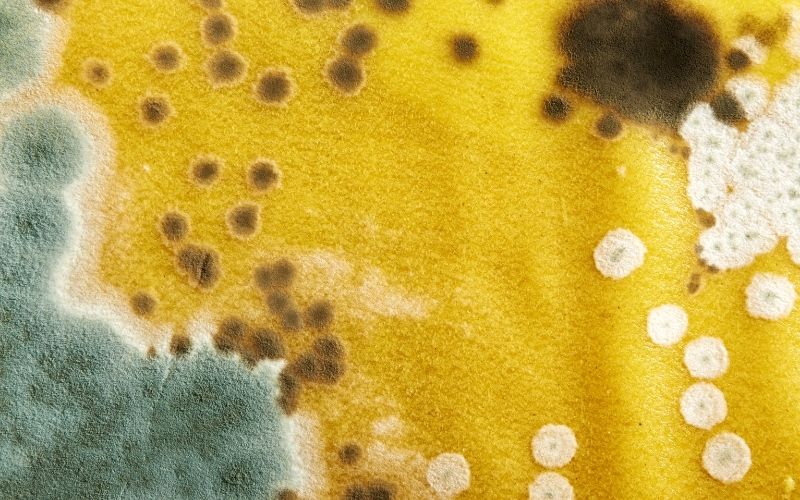
Not only is mold ugly, but it can also make you sick. If you have asthma, allergies, or other respiration problems, you are vulnerable to the hazards of mold.
Mold can affect your eyes, nose, ears, and lungs.
You could find yourself sneezing. You may have trouble breathing. You may even develop tissue damage and cough up blood.
So the best solution is to keep mold from developing at all. Clean and dry your kayak completely, and immediately, after every use.
Even if you are tired, always leave enough time after your outing to take care of your kayak.
That way, you will extend the life of your kayak and keep yourself from getting sick.
How Do You Clean Mold Out Of an Inflatable Kayak?
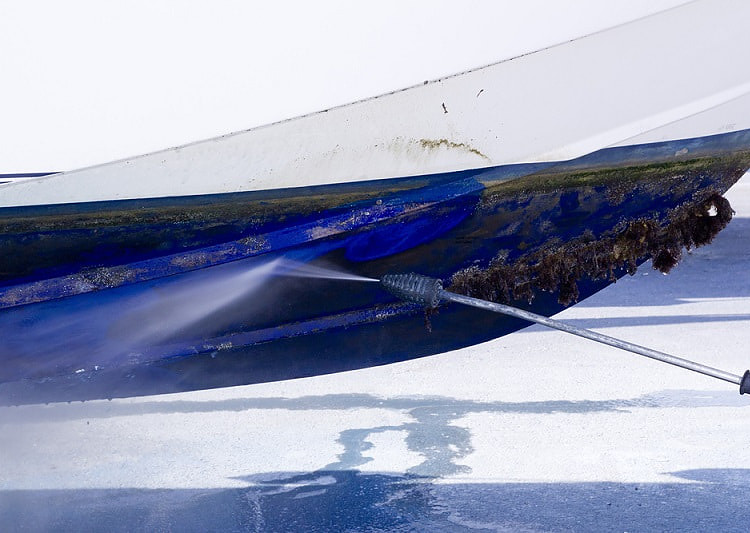
So how do you properly clean and dry your kayak to remove mold and to help keep it from returning?
First, gather the correct materials. These include a five-gallon bucket, water, cleaning solution, white vinegar, a large sponge, a scrub brush, water, and protectant, which you can purchase from a marine store.
If it seems to be a contradiction to use water, don’t worry. If you dry the kayak thoroughly, the water will only assist by washing away unwanted organisms.
Next, bring your kayak close to a hose to make the job easier. Do this in a large area. A driveway is perfect.
Start by rinsing your kayak. Let the water soak in to soften the mold. The soaking time depends on the amount of mold. Thirty minutes is sufficient for most cleaning jobs.
Place the cleaning solution in the bucket and stir it to produce a strong mixture. Include an equal amount of water and vinegar.
Add the soap. You need enough soap to produce suds.
Dip the brush or sponge into the cleaning solution. Spread it generously onto the kayak, adding a greater amount to the molded areas.
Wait at least one minute before wiping the area. The area will gradually become clean.
The entire process should take an hour or less, depending on the amount of mold and the length of time the mold has had to set in.
Dry the kayak with towels. Let it air-dry in the sun if you have a warm day.
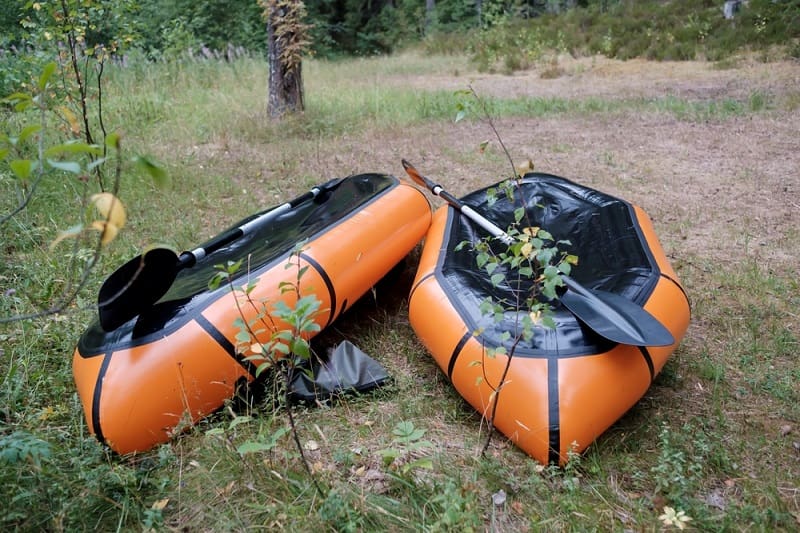
Once your kayak is dry, apply the protectant. That way, you can keep the mold from returning.
To apply the protectant, first make sure your kayak is totally dry. Protectants are not effective if applied when the surface is still wet.
Apply the protectant in a thin, smooth manner. Be sure to follow the instructions on the protectant container.
Allow the protectant to dry, and then you are done.
Is It Okay To Leave an Inflatable Kayak Inflated?
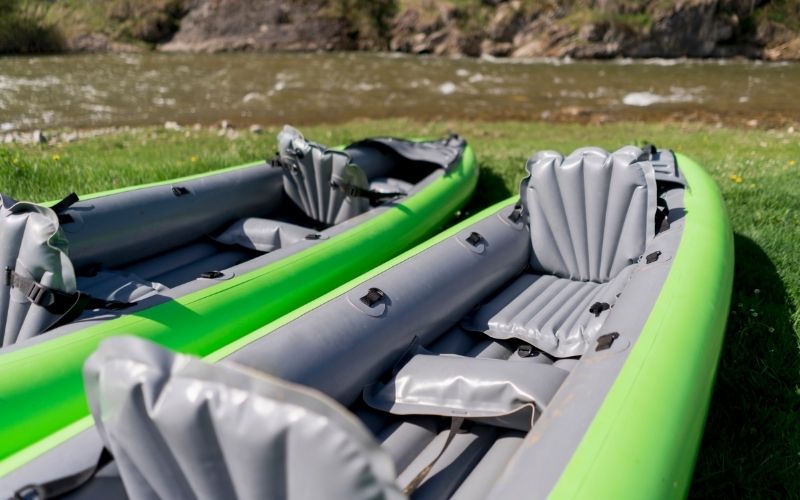
Just as removing mold is important, how you store your kayak also affects its long-term health.
Kayak owners are certainly free to manage their kayaks as they see fit. But is the best practice to leave your inflatable kayak inflated when you are not using it?
Absolutely not!
There are numerous reasons why this is not a good idea.
First, you can damage the material–it could become strained. Strained skin eventually becomes torn.
Small tears grow into large rips. Large rips evolve into punctures. All of these lead to costly repairs.
Another problem involves the air inside of your kayak. When air is left inside, it tends to expand.
This not only results in skin ruptures, but it can also effect the shape of your kayak.
If your kayak is insured, these issues can also affect your insurance rate. Kayaks that cost $1500 or more can require appraisals for insurance purposes.

If you want to insure your kayak for the full amount that you spent to buy it, the appraisal could result in a high deductible. Even worse, the insurance company may refuse to cover your kayak for the amount it cost you.
Why would you want to spend $1500 for a kayak and then let its value diminish because of material damage and expanding air?
Kayaking presents a number of risks. These include hypothermia, poor weather conditions, capsizing, and drowning. Don’t let mold make kayaking less safe.
You chose the sport so you could relax and have fun, not to put yourself in danger.
So, stay safe. Deflate your kayak when you are not using it to protect it and to protect yourself.
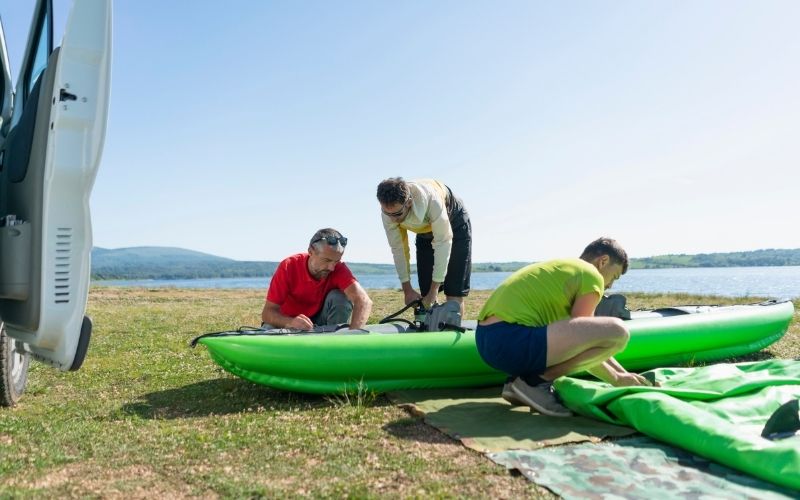
Conclusion
Mold finds its way to water like sewage to a drain. That is why kayak owners must take proper care of their kayaks to keep mold away.
Be sure to remove the mold before it has a chance to spread. Small speckles can grow into large patches if they are not removed quickly.
Find a spacious area to place your kayak when cleaning it. Clean it on a warm day to help it dry faster.
Use soap, water, vinegar, and cleanser from a marine store. Mix these thoroughly in a bucket. Administer the cleaning mixture to your kayak one section at a time.
Use a towel to dry each section separately. Leave the kayak in the sun to ensure that it dries completely.
When the kayak is totally dry, apply the protectant.
Most importantly, do not leave the kayak inflated when not in use. This makes it easier for mold to attach itself to the kayak skin, and then to spread.
With clean, mold-free material, you can paddle proudly through canals and other waterways, showing the world your beautiful kayak.

I created this site to help people – to help you – with your boat problems. Instead of helping one person at a time, I want this website to be the “one-stop-shop” for everyone’s boating concerns. Read more.

